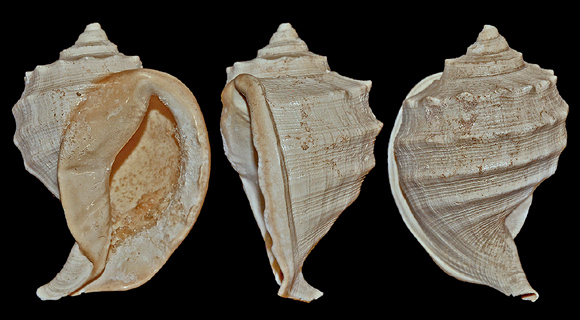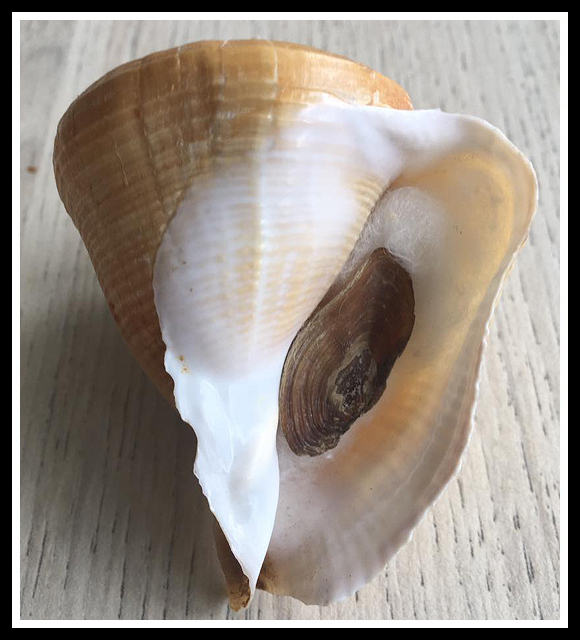– Part 2: curiosa –



– (CC BY-NC-SA) –

« The shell in question here was caught a short time ago in the Gulf of Fos, 16 or 17 kilometers off the coast, west of Cap Couronne, not far from the port of Martigues, department of the Bouches-du-Rhône: it was 50 to 55 fathoms deep, on a muddy bottom, with Isocardia cor, Pecten Jacobaeus, Murex erinaceus, Cassidaria echinophora, etc. The fisherman, first taking this shell for a Cassidaria, was preparing to put it aside to eat the animal, when he was puzzled by a difference in shape which determined him to keep it to give it to M. Martin. The latter was gentle enough to send it to us in communication, under the name of Pyrula provincialis, and with a request to make it known in the Journal de Conchyliologie: here is the characteristic of the species, which we show with its operculum, plate 8, fig. 4. » – S. Petit de la Saussaie: “Notice sur une coquille trouvée sur les côtes de la Méditerranée par M. Martin, de Martigues”, Journal de Conchyliologie vol. 2, Paris 1851, p.248-249.

« Shell oval-bellied, triangular in shape, quite thin, reddish-yellow, very flattened on top, presenting on its surface some streaks, and uneven undulating transverse ribs. Whorls six; spire short, triangular, acute; the columellar margin covered with a calcareous layer taking the lamellar form and covering the umbilicus; the right edge somewhat reflexed, white and smooth internally. Length: 55mm. Width: 46mm. » – Ibid.
Above and below: two specimens of the variant “provincialis” from Ancona. Original pictures provided by F. Swinnen (BE).
– (CC BY-NC-SA) –

« One notices towards the upper part of the last whorl some bumps and irregular folds which seem to be the result of the work of a sick or badly shaped Mollusk. We must have made Mr. Martin’s shell known by the name he gave it, but was he not deceived by appearances, and is it really a Pyrula? We will admit that at first glance we also thought that it could well belong to this genus; however the discovery of a new Pyrula, of this size, in the waters of the Mediterranean, on a coast so frequently explored, inspired us with some mistrust, and we examined this shell with the greatest attention, in which we soon believed to recognize, by its texture, a variety, or rather a monstrosity of the Cassidaria, which lives in the Mediterranean, in agreement in this with the first thought of the fisherman who had found it… » – Ibid.

– (CC BY-NC-SA) –